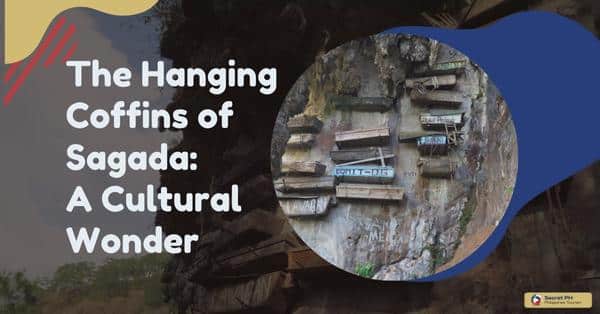The Kiangan Church, located in Apayao, is a significant historical landmark. Built in the 19th century, it stands as a testament to the region’s rich cultural heritage and religious influence. With its impressive architecture and historical significance, the Kiangan Church serves as a captivating symbol of the area’s past.
Through the years, Kiangan Church has played a significant role in the lives of the locals, serving as a symbol of their faith and a testament to their resilience. In this blog post, we will delve deeper into the history and significance of Kiangan Church, and discover why it is considered a must-visit destination for tourists and pilgrims alike.

Kiangan Church
Kiangan Church is a renowned historical landmark located in the Philippines. It was constructed in the 1800s. The church reflects an outstanding combination of Filipino and Spanish architecture. The majestic church features a bell tower, ornate carvings, and intricate stained glass windows. This iconic landmark has been standing for over a century and has seen many significant events in Philippine history.
Today, the church serves as a place of worship for locals and visitors alike. It is open daily for tourists who wish to admire its architectural beauty and get a glimpse of the history that surrounds it. Kiangan Church is truly a remarkable sight and well worth a visit for anyone interested in Philippine history and culture.

Historical Background
The Kiangan Church stands as a testament to the rich cultural heritage of the Philippines and the Ifugao people in particular. The construction of this stunning church is a remarkable accomplishment. Considering it was built entirely by hand using indigenous materials and techniques. The local Ifugao community worked together using traditional methods to cut and shape the stones used in the construction of the church.
It’s a testament to the incredible craftsmanship of the people. The church’s architecture is striking, with its intricate details and the soaring tower that seems to rise towards the heavens. It is an inspiring example of the power of human ingenuity and the enduring legacy of the Filipino people. For those visiting the Philippines, the Kiangan Church is a must-visit destination. This is sure to leave you awe-struck with its beauty and rich cultural history.
Influence of Spanish Colonization
The Spanish colonization has left a significant imprint on the Philippines. This is particularly in terms of architecture and religion. An example of this is the Kiangan Church located in the Ifugao province. Built in the early 1900s, the church’s architecture showcases the fusion of traditional Ifugao and Spanish baroque styles. The intricate and ornate facade of the church is a testament to the skills of the local artisans.
Under the guidance of Spanish friars, they were able to create a stunning work of art. The church’s design also reflects the influence of Christianity on the Ifugao people. They adopted the religion as a result of the Spanish colonization. The Kiangan Church stands as a symbol of the enduring legacy of the Spanish colonization in the Philippines.

Role of the church in the local community
The role of the church in the local community cannot be overemphasized, especially in the Philippines. In Kiangan, Ifugao, the church plays an active role in promoting social harmony and stability. The church provides a platform for community members to come together and interact through various programs. These includes youth camps, spiritual retreats, and music festivals. Additionally, the church is a vital source of support for families that have lost loved ones.
They provide counseling and comfort during trying times. The church also plays a critical role in responding to societal issues. It includes poverty and natural disasters, mobilizing resources, and working with government institutions to provide aid to those in need. Kiangan Church in Ifugao is an essential institution in the community, providing a sense of belonging and direction for its members.

Cultural Significance
The integration of indigenous elements into architecture is a captivating process that denotes a deep appreciation for culture and tradition. The Kiangan Church is a perfect example of how incorporating indigenous elements can create a stunning and unique aesthetic. This church stands as a cultural icon for its indigenous design and construction.
The use of materials like wood, bamboo, and slate, gives the church a warm and welcoming feel, which is representative of the local peoples’ customs and values. Its steep and intricate wooden roofing is an impressive feature that is an excellent representation of the unique architecture. The Kiangan Church stands as proof that combining traditional and modern techniques can create functional, aesthetically pleasing architecture.
Religious practices and ceremonies
The Kiangan Church in Ifugao is a place of profound religious significance, where a variety of vibrant religious practices and ceremonies take place. Rooted in the rich cultural traditions of the Ifugao people, these rituals are carried out with great reverence and devotion. Here is a list of some of the religious practices and ceremonies observed in the Kiangan Church:

- Holy Mass: The Kiangan Church holds regular Mass services where the faithful gather to celebrate the Eucharist and receive the sacraments. These Masses are led by priests and accompanied by traditional Ifugao music and chants, creating a spiritually uplifting atmosphere.
SCHEDULE OF MASSES
Monday – None
Tuesday – None
Wednesday – 6:00 PM
Thursday – 6:00 PM
Friday – 6:00 PM
Saturday – 7:00 AM
Sunday – 6:00 AM, 8:00 AM, 10:00 AM, 5:00 PM
- Baptism: The Church conducts baptism ceremonies, welcoming individuals into the Christian faith. Through the symbolic act of water immersion or sprinkling, believers are initiated into the community of believers and receive the grace of God.
- Wedding Ceremonies: The Kiangan Church is a sacred space for couples to exchange their vows and receive the sacrament of marriage. These ceremonies are solemn and joyous occasions, attended by family, friends, and community members who offer prayers and blessings for the newlywed couple.
- Sacrament of Reconciliation: The Church provides a space for the sacrament of reconciliation, also known as confession. In this ritual, individuals confess their sins to a priest, who offers absolution and spiritual guidance, providing an opportunity for repentance and reconciliation with God.
- Novena and Devotions: Devotional practices such as novenas, rosary prayers, and adoration of the Blessed Sacrament are integral to the religious life of the Kiangan Church. These acts of prayer and meditation provide individuals with opportunities for personal reflection, supplication, and spiritual growth.
Architectural Features
Kiangan Church, located in the Ifugao province of the Philippines, is a beautifully-designed structure that stands tall and grandiose. The church’s exterior is uniquely designed with its ivy-covered walls and a red roof that complements the surrounding mountain range. Its façade is also adorned with intricate brickwork that adds to its captivating beauty.
The church’s architecture is rich with history and culture, as it is a representation of the merging of indigenous Ifugao and Spanish colonial styles. Its towering bell tower, which was added later, has become a familiar landmark for the people of Kiangan and remains a popular tourist destination. Without a doubt, the exterior design of Kiangan Church is a testament to the rich heritage and traditions of the Philippines.
Notable interior elements and decorations
The Kiangan Church in Ifugao is a testament to the rich history and culture of the Philippines. As you step inside, you’ll be greeted by the notable interior elements and decorations that are sure to catch your attention. The church’s hand-carved wooden doors and beams showcase the beautiful craftsmanship of the locals. The intricately painted ceiling features traditional Filipino motifs that add to the church’s unique beauty.
The stained-glass windows bring in a soft glow that creates a serene atmosphere. The Kiangan Church holds great significance, not just for its religious importance but also for its exquisite design and cultural significance. Visiting this church is an opportunity to appreciate the rich artistic heritage of the Philippines.

Cultural activities and events held at the church
The Kiangan Church in the Philippines is not just a site of worship, but also a hub of cultural activities and events. Visitors to the church can witness traditional dance performances, music recitals, and arts and crafts exhibits, showcasing the rich and diverse cultural heritage of the Ifugao people. Local groups often organize events at the church, such as the ritual dance of Gotad ad Kiangan and the Hudhud chants, which have been recognized by UNESCO as a masterpiece of oral and intangible heritage. Attending these events is a great way to immerse oneself in the local culture and gain a deeper understanding of the history and traditions of the Philippines.
In Conclusion
Overall, the Kiangan Church is a must-see historical landmark in the Apayao region of the Philippines. This church has stood for over a century and has witnessed numerous changes and events throughout the country’s history. It serves not only as a religious symbol but also as a cultural one. Representing the resilience and strength of the Filipino people.
Visitors to the church can marvel at its intricate architectural details and immerse themselves in the rich history of the region. The Kiangan Church is truly an impressive example of the country’s heritage and a testament to the unwavering spirit of its people.








